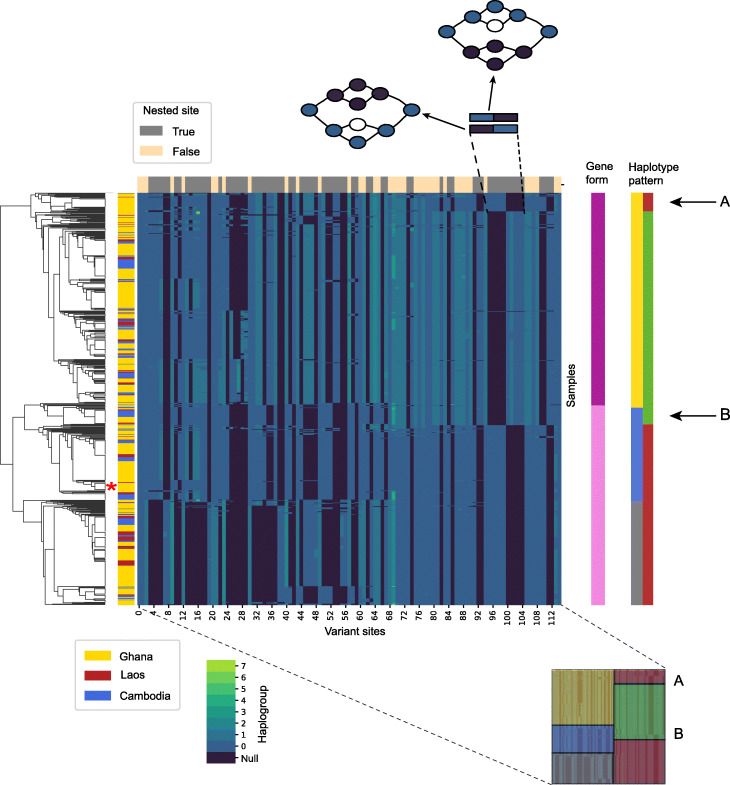Fig. 7.
gramtools captures allelic dimorphism and nested variation in P. falciparum gene DBLMSP2. Genotypes of 706 samples from Ghana, Laos and Cambodia spanning the DBL domain of gene DBLMSP2 are represented in a heatmap of variant sites (x-axis) versus samples (y-axis). Each cell in the main square is coloured by haplogroup, which can be considered here as an alternate allele number; a null (darkest blue) haplogroup indicates no call made at a site. The tree on the left shows a hierarchical clustering of alleles. The clade nearest to the reference genome 3D7 is shown with a red asterisk to the right of the tree. The vertical strip to the left of the heatmap shows country of origin of each sample. The vertical strip to the right of the heatmap shows the broad classification of haplotypes into two forms—form 1 (dark pink) and form 2 (light pink), corresponding to the deepest split in the tree and the two known dimorphic forms. Comparing the location of the asterisk shows 3D7 is of form 2. In order to linearise the sites within the graph for display in a heatmap, they are sorted topologically, and a strip across the top of the heatmap shows whether sites are nested. As a clarifying example, the blowout at the top shows how two incompatible nested SNPs on different backgrounds are displayed as either dark-then-light-blue or light-then-dark blue blocks in the heatmap, with the incompatible haplotype shaded darkest blue (null call). This heatmap allows visualisation of haplotype patterns and recombination. We show, bottom right, a blowout with 5 haplotype patterns coloured yellow, blue, grey (all from the left side of the heatmap) and green, red (from the right). Using these classifications, we describe all alleles as combinations of two haplotype patterns, shown in the far-right vertical strip. Form 1 is almost entirely yellow-green, and form two itself has two subforms—blue-red and grey-red. We highlight two recombinant haplotype patterns labelled A (yellow-red) and B (blue-green). Both A and B exist in all 3 countries

